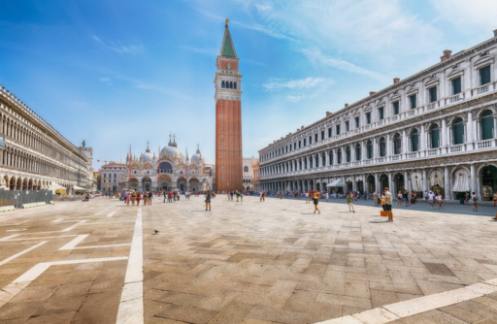The Venice Biennale, an internationally renowned art exhibition, has long been a stage for groundbreaking artistic expression and provocative discourse. However, as with any major cultural event, it is not without its controversies and criticisms. From issues of gender representation and equity to tensions between nationalism and globalism, the Biennale navigates a complex web of political and social dynamics. As art and politics continue to intersect on the world stage, understanding the intricate relationships at play in the Biennale is crucial for both artists and audiences alike.

Gender Representation and Equity in the Venice Biennale: Addressing Criticisms
Gender representation and equity in the Venice Biennale have been subjects of intense scrutiny and criticism in recent years. Many observers have noted the lack of female artists featured in the exhibition, with women artists often underrepresented in comparison to their male counterparts. This gender disparity has raised important questions about the biases and inequalities present in the art world, and has sparked debates about the need for greater diversity and inclusion in artistic spaces.
Critics argue that the Venice Biennale, like many other prestigious art events, has historically favored male artists and perpetuated a male-dominated art world. They point to the fact that women artists are often excluded from major exhibitions and collections, and that their work is frequently undervalued and overlooked. This lack of representation not only limits opportunities for women artists to showcase their work and gain recognition, but also reinforces stereotypes and norms about who can and should be considered a serious artist.
In response to these criticisms, some efforts have been made to address gender disparities at the Venice Biennale. For example, in recent years, curators have made a concerted effort to include more works by women artists and to showcase diverse perspectives on gender and identity. Special exhibitions and programs have also been organized to highlight the achievements of women artists and to promote gender equity in the art world.
Despite these efforts, however, challenges remain in achieving true gender representation and equity at the Venice Biennale. Structural barriers and biases within the art world, such as unconscious biases and institutional norms, continue to hinder the progress of women artists and other underrepresented groups. While some progress has been made, much work still needs to be done to create a more inclusive and diverse art world that truly reflects the richness and complexity of human experience.
Nationalism vs. Globalism: Tensions in Artistic Expression at the Biennale
Nationalism and globalism are two contrasting ideologies that often come to a head in the world of artistic expression, particularly at events like the Venice Biennale. The tension between these two perspectives can be seen in the way artists choose to represent their national identity versus embracing a more universal, global perspective in their work. This clash of ideologies can be seen in the artworks themselves, as well as in the overarching themes and curatorial decisions made at the Biennale. Artists must navigate this delicate balance between celebrating their cultural heritage and contributing to a broader, global dialogue in the art world.
Controversial Artists or Controversial Art? The Thin Line in Venice
The Venice Biennale is no stranger to controversy, with artists often pushing the limits of artistic expression. However, the question often arises: are these artists truly controversial, or is it their art that is controversial?
The thin line between controversial artists and controversial art is a delicate one. While some artists themselves may lead controversial lifestyles or make controversial statements, it is ultimately their art that is on display at the Biennale. The question then becomes whether the controversy surrounding the artist should overshadow the art itself.
In Venice, where the art world converges and diversity of opinions is celebrated, navigating this thin line is essential. Artists must be allowed the freedom to express themselves without censorship, but at the same time, their work must be open to interpretation and critique.
Ultimately, the Venice Biennale is a platform for artistic expression, where controversy can spark important conversations and challenge societal norms. It is important to recognize the difference between controversial artists and controversial art, and to allow for open dialogue and interpretation in the realm of artistic expression.
Financial Politics and Sponsorship: Influence on Artistic Curation at the Biennale
The Venice Biennale, one of the most prestigious art exhibitions in the world, is not immune to the influence of financial politics and sponsorship. The funding and support received from various sources can greatly impact the artistic curation of the event. Artists may feel pressured to cater to the interests of sponsors, potentially compromising their artistic integrity. Additionally, the financial backing of certain sponsors may result in the exclusion of controversial or provocative artwork that goes against the interests of those sponsors. Ultimately, the financial politics and sponsorship surrounding the Venice Biennale play a significant role in shaping the overall artistic landscape of the event.
